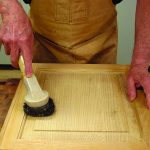We may receive a commission when you use our affiliate links. However, this does not impact our recommendations.

The right hardware is as important as wood selection and finish.
Editor’s note: This article originally appeared in the August 2016 issue of Popular Woodworking
Not too long ago, I was approached by Megan Fitzpatrick about writing an occasional feature on hardware in the magazine. After a solid three minutes of thought, I jumped at the idea. Hardware is something that a lot of woodworkers have questions about – and I can help out with that.
Why does hardware matter? Well, you spend countless hours getting the joinery and finish as perfect as you can make it. Whatever you are building – whether a keepsake chest for a small child, a jewelry box for a family member or a tool chest for yourself – your pieces are your masterpieces. Yet for some reason, when many woodworkers come to the very end of the project and have to make a choice on the hardware, they end up at a big box retailer.
Just as you wouldn’t go to Sears for tires on a Ferrari, I propose that you shouldn’t put lousy hardware on your masterpiece. Choose quality for your hardware the same as you do for your other materials.
Hardware Considerations
There are three components to hardware: Design, materials and finish. I am not sure that any one of those attributes is more important than the other…but I am quite sure that each one has to be done right or the others don’t matter. (I’ll be devoting future columns to these topics so you can make sense of what’s what.)
Quality hardware is available from a number of places – but it’s likely not available at your local big box retailer. A bit of digging will uncover a variety of small companies that make exceptional hardware – both decorative and functional – to suit virtually any woodworking. Each company likely will have its own niche and expertise, so you need to find the companies that make hardware for your style of projects and personal aesthetics.
What is Meant by ‘Design’
The word “design” has many different connotations. But I think most people automatically visualize an ultra-contemporary house with a whole bunch of straight lines and steel where you don’t think there should be such things. (Well, that’s what I see anyway.)
But not all design is new. As a woodworker, it is helpful to know a bit about the different time periods and what went where, when. That is, why a specific piece of hardware is made in a certain way, and how it was originally used.
Some people might say there are rules about period design – and that may be true. But rules are meant to be broken – and, with a better understanding of what happened why and when, you, as the woodworker, can have a lot more fun.
Material & Finish
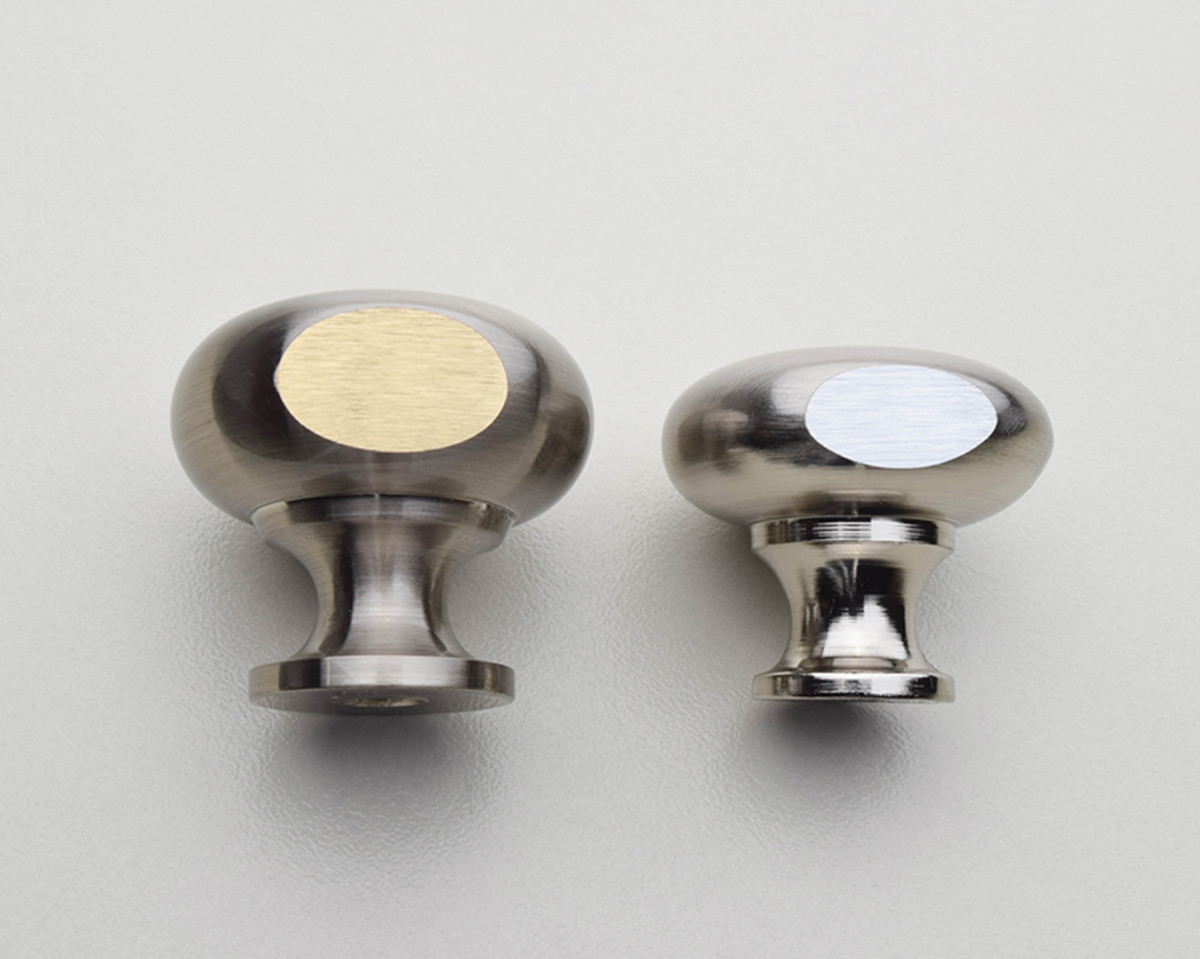
Beauty inside. The material beneath the surface matters, too – it should be brass throughout.
Quality hardware can come from a variety of sources, of course. But choosing hardware like you choose your wood makes a lot of sense. In the same way that starting with mediocre wood limits the quality of your furniture, starting with lousy raw materials limits the quality of the hardware.
I’ll take an in-depth look at materials in a future column, but the short answer is: Look for solid brass (just say no to pot metal) and use forged iron where appropriate.
But watch out for that one. “Wrought iron” literally means iron that has been bent. You’re better off looking for something that an actual smith made with his or her two hands – or at the very least something that was heated with fire at some point along the way.
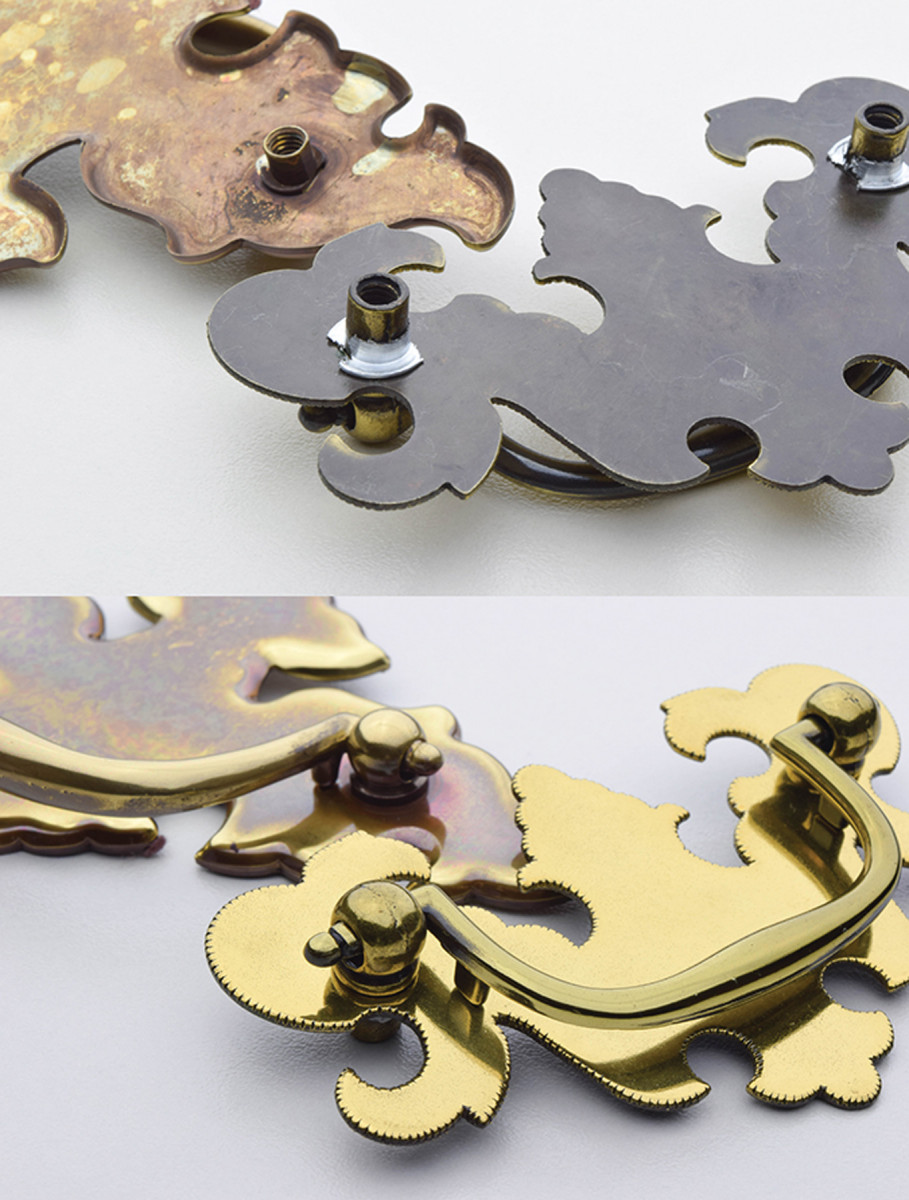
Details matter. One pull has a hollow back to give the hardware a false sense of depth. The other has crude mechanical cuts in lieu of a proper bevel. Both pulls use open posts – but pulls from this period should have blind post holes so the bails don’t stick out. Blind post holes result in a more elegant appearance.
Finish is where the rubber really meets the road. There is an obvious parallel between metal finishing and wood finishing. Just as perfect dovetails don’t matter if the wood doesn’t have the right glow, great hardware isn’t great unless the finish is on target.
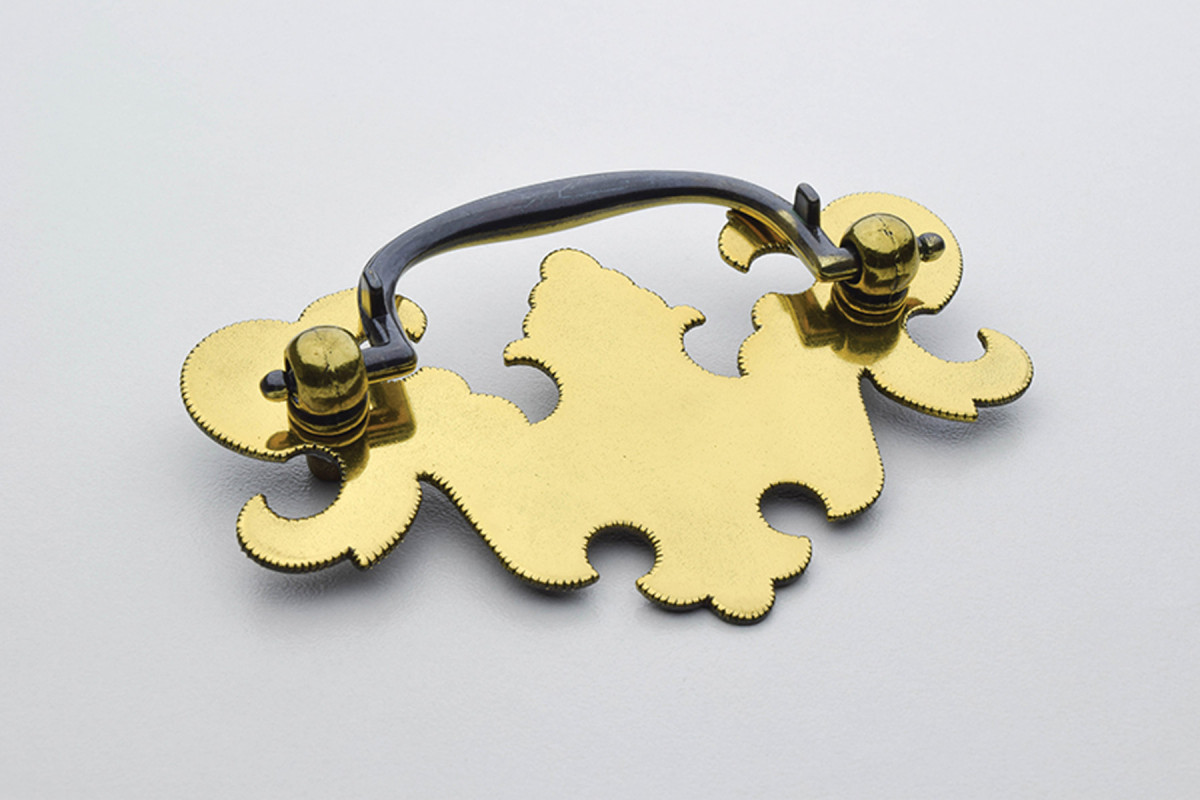
The finish matters. Did someone miss a spot here (say, the back of the handle)?
There are a variety of ways to finish metal and more than one good one. Depending on the look you are after, a piece might be polished, dipped, plated or even fumed with ammonia. Each has its place.
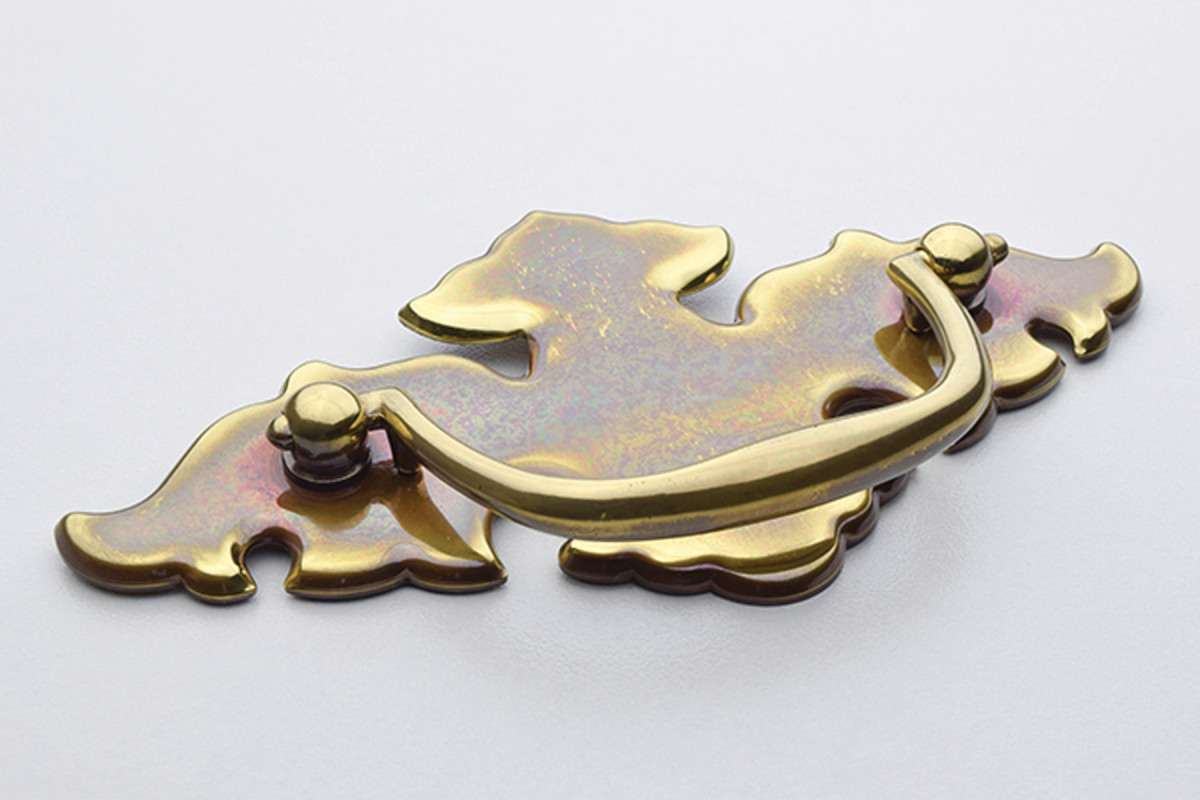
Finish matters, part two. Apparently removing oil from production took a back seat on this chunky piece.
But one thing matters above all else – the hardware should have “depth” (that is, feel substantial and three-dimensional) and it should feel good – that matters just as much as the look (maybe more so!).
Why Me?
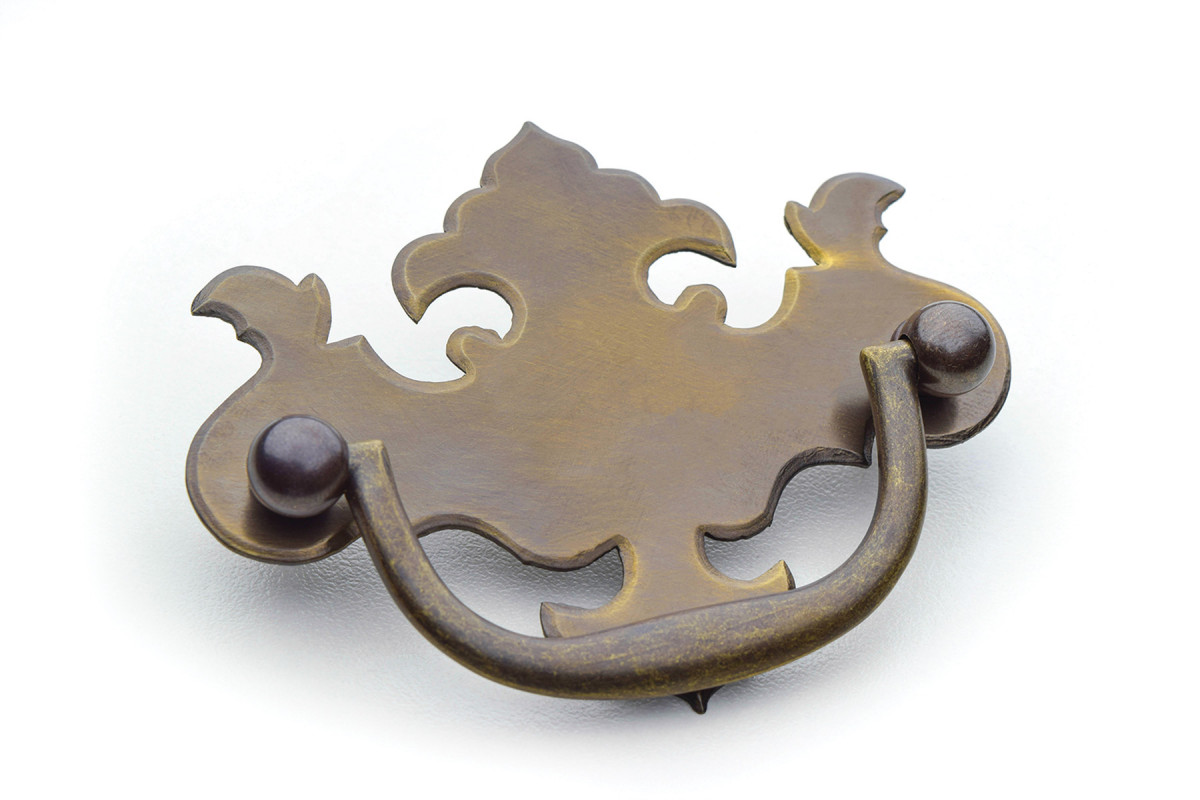
Nice work. Note the bevel on all edges of the plate with some evidence of handwork, the properly closed posts to fit the bails and a rich depth to the antique patina. (I might be a little biased; this is a Horton Brasses Chippendale drawer pull, with the antique finish.)
If you’ve made it this far, you’re probably thinking one of two things. First, “I talk to Orion regularly – I’m surprised he’s literate.” Or, more likely, “Who is this guy and what does he know anyway?”
My full name is Orion Horton Henderson, and I am the fourth generation proprietor of Horton Brasses. My family has made furniture and cabinet hardware since about 1936. I’ve been involved with the family business since 2001 and have heard all about hardware for my entire life.
My parents and grandparents’ homes have been filled with antiques since the beginning, and I have grown up looking at and touching furniture and the metal that goes on it.
But as I said earlier, this column isn’t about my company’s products – it’s about how to select and install hardware in general. The metal you put on your work really is the crowning touch – my goal is to help you get that right.
Related article: Learn how to install knife hinges.
Here are some supplies and tools we find essential in our everyday work around the shop. We may receive a commission from sales referred by our links; however, we have carefully selected these products for their usefulness and quality.









